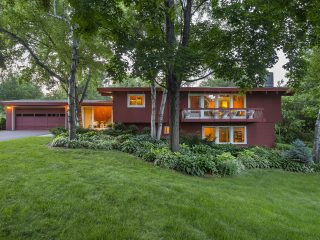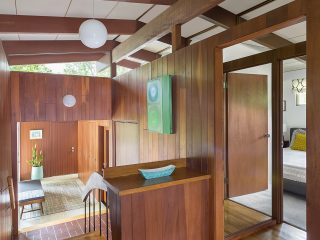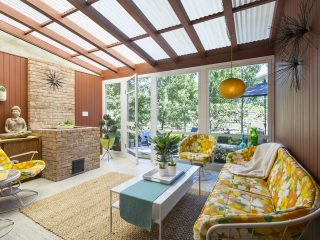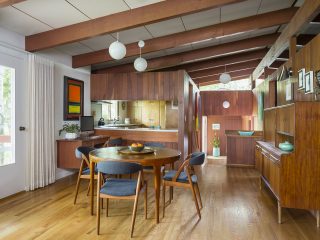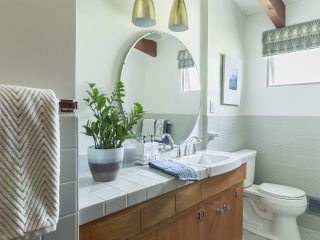-
1 of 6
Architect Don Davies was a commercial artist by trade, but when it came time to build a home for his family, he was just the man for the job. His walkout rambler, nestled behind a cluster of trees in a quiet neighborhood outside Minneapolis, provided an idyllic home for his wife and three girls in the mid-1950s. It was the vision of postwar suburban bliss—so much so that Better Homes & Gardens even sent a photographer to document the family’s stylish abode, capturing a moment in time that endured for more than five decades.
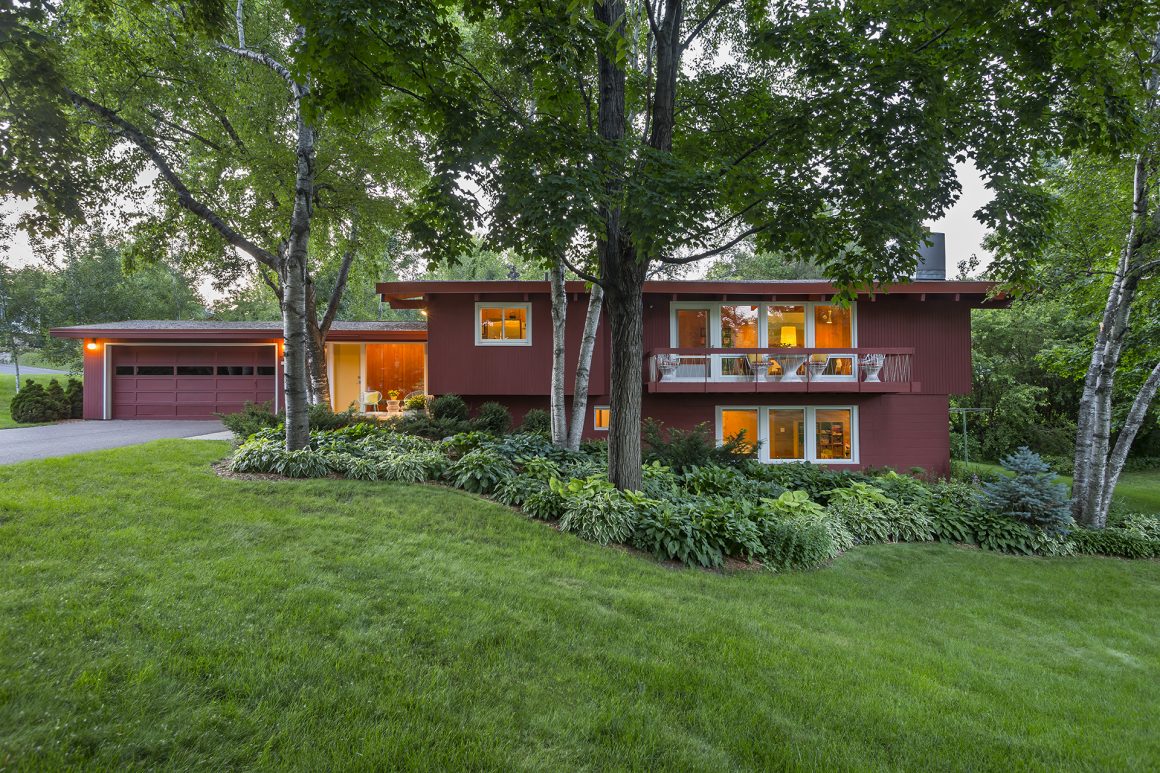 Andrea Rugg
Andrea Rugg -
2 of 6
“When we walked through the house, we felt like it was a movie set. Don and his family did not change anything,” Kari Brandt says. Kari and her husband Eric purchased the house in 2010. Although the couple had been looking for a larger home to accommodate their family of four, they fell in love with the clean lines and efficient use of space in Davies’ two-bedroom design. They were equally enamored with the home’s distinctive features—from the cherry-paneled walls and vaulted, beamed ceilings, to the built-in brick grill in the sunroom.
“It was important for them to bring in the modern-day things they need for the way they live, without infringing on the spirit of the house,” lead designer and project manager Kristine Anderson of Peterssen/Keller Architecture, who oversaw the six-month renovation, says.
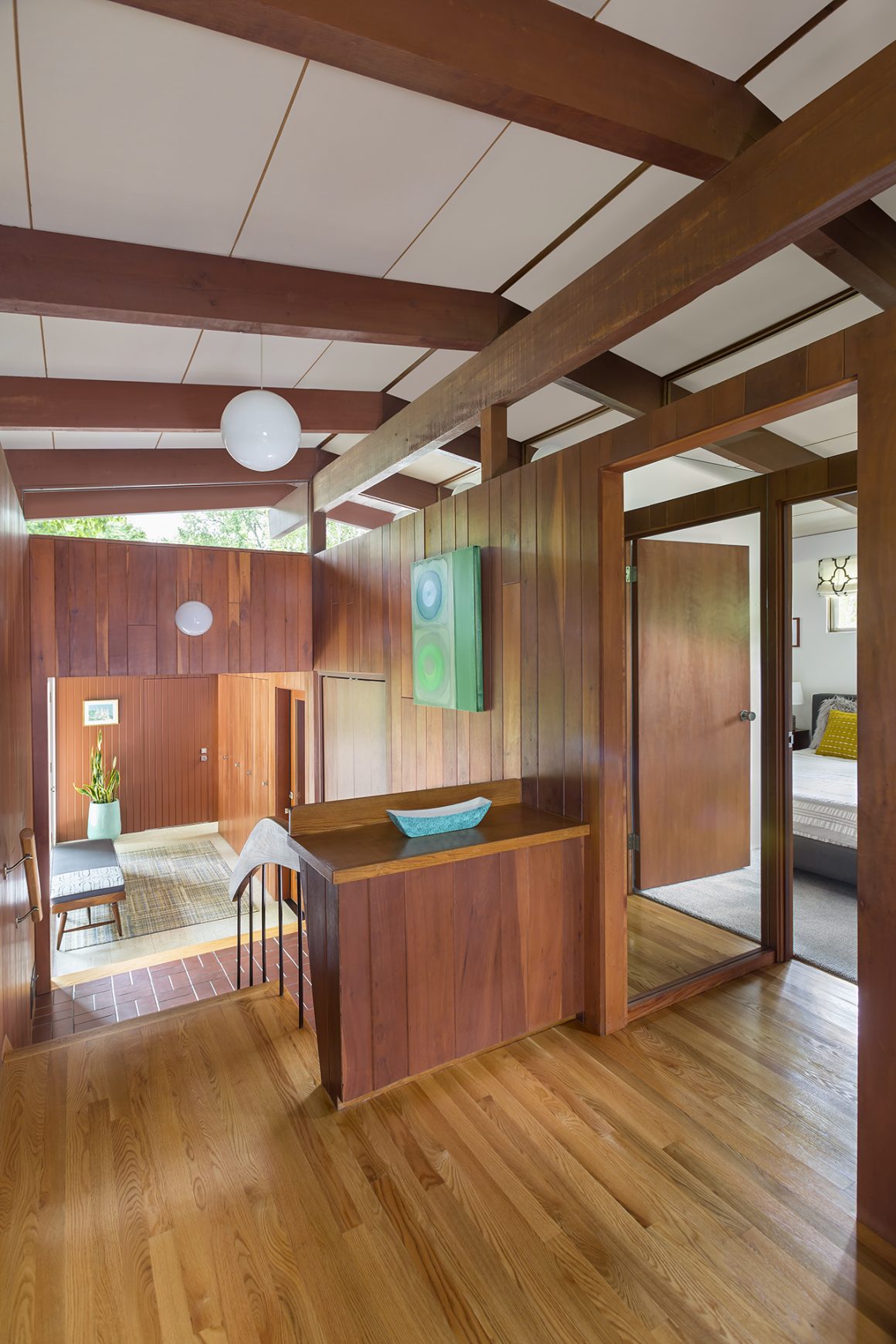 Andrea Rugg
Andrea Rugg -
3 of 6
The final design scheme retained the original footprint, but closed off the breezeway between the garage and the house to create two habitable spaces. The front area was transformed into a formal entry and mudroom, with built-in lockers that match the look and feel of the original cherry cabinetry throughout the house. On the back side of the entry, the original sunroom became a screened porch, which opens onto a large patio space perfect for outdoor entertaining. “Most of the time, when people move into houses, they’re trying to knock walls down,” Kari notes. “They don’t even think, ‘Let’s put a wall up.’”
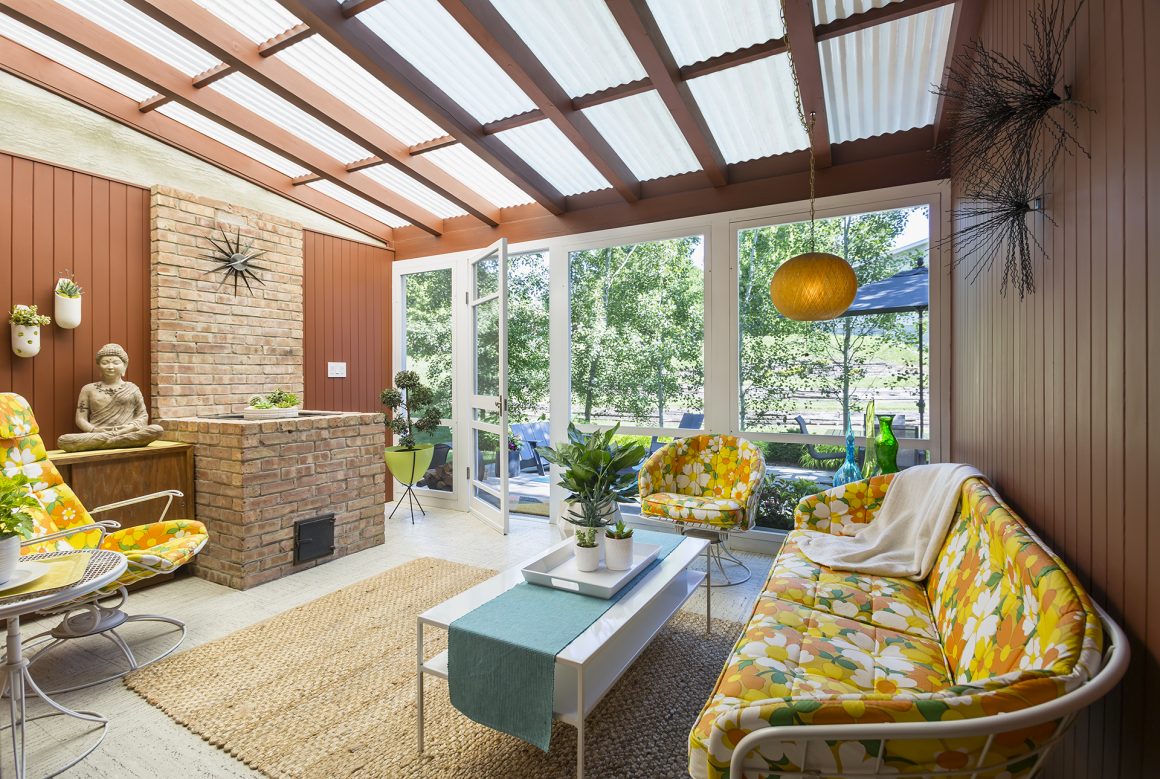 Andrea Rugg
Andrea Rugg -
4 of 6
Other changes included upgrades to the electrical and plumbing, and installing energy-efficient Marvin windows on both levels. Because the walls connecting the master bedroom and hallway did not extend to the ceiling, insulated glass was added to close the vaulted space and buffer the sound. “If somebody so much as opened the silverware drawer, it would jolt you awake,” Eric recalls, laughing.
The kitchen itself was left almost entirely intact, with the Brandts opting to keep the original linoleum floors, cherry cabinets and boomerang-patterned Formica countertops. Kristine helped source new appliances that could fit into the existing boxes. “We were able to delicately put these things in and retain the coolness of the space,” she says. Likewise, the bathrooms were barely touched, with the owners replacing the toilets and faucet fixtures, but little else.
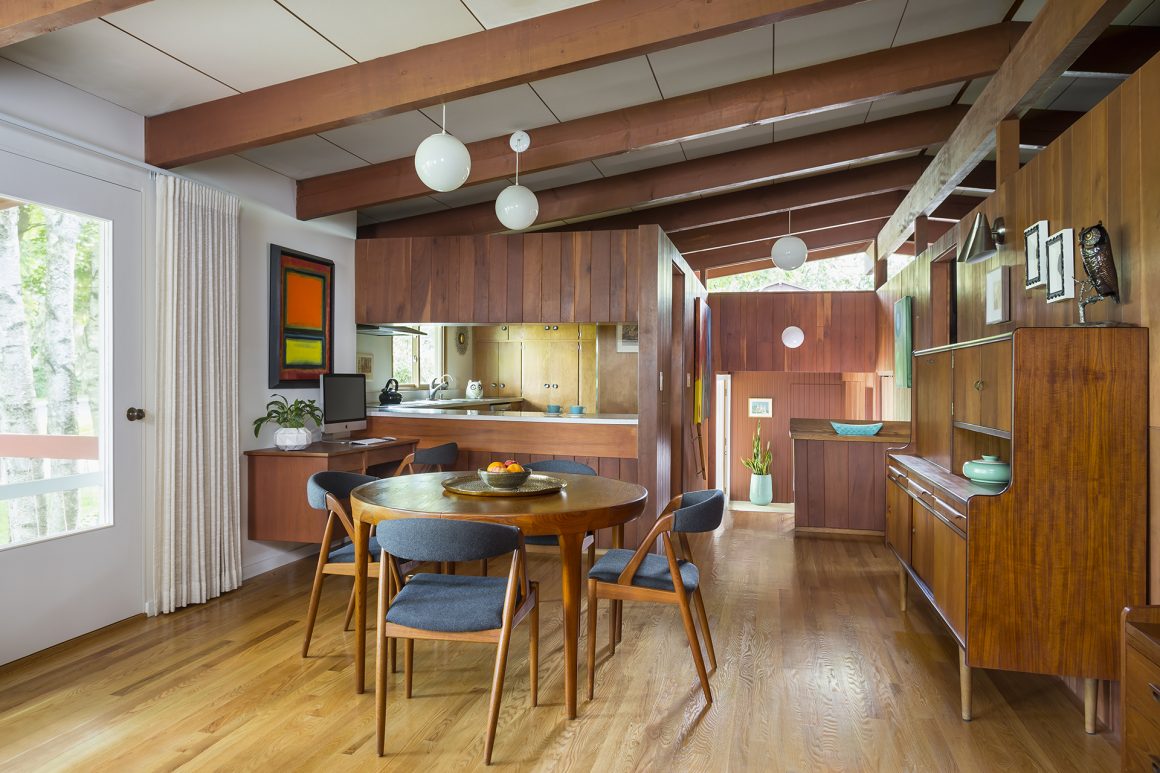 Andrea Rugg
Andrea Rugg -
5 of 6
Since moving into their midcentury home, Eric and Kari have become adept at hunting out vintage furniture that fits the modernist design. They scored a Danish teak dining table at an estate sale, and drove to Milwaukee for two original Adrian Pearsall lounge chairs they found on Craigslist. The screened porch looks much like it did in the old magazine photos, thanks to a classic Homecrest patio set the Brandts acquired from an elderly couple, who had kept the items in storage. Several pieces also were original to the house, including a large coffee table in the living room that Don Davies built himself.
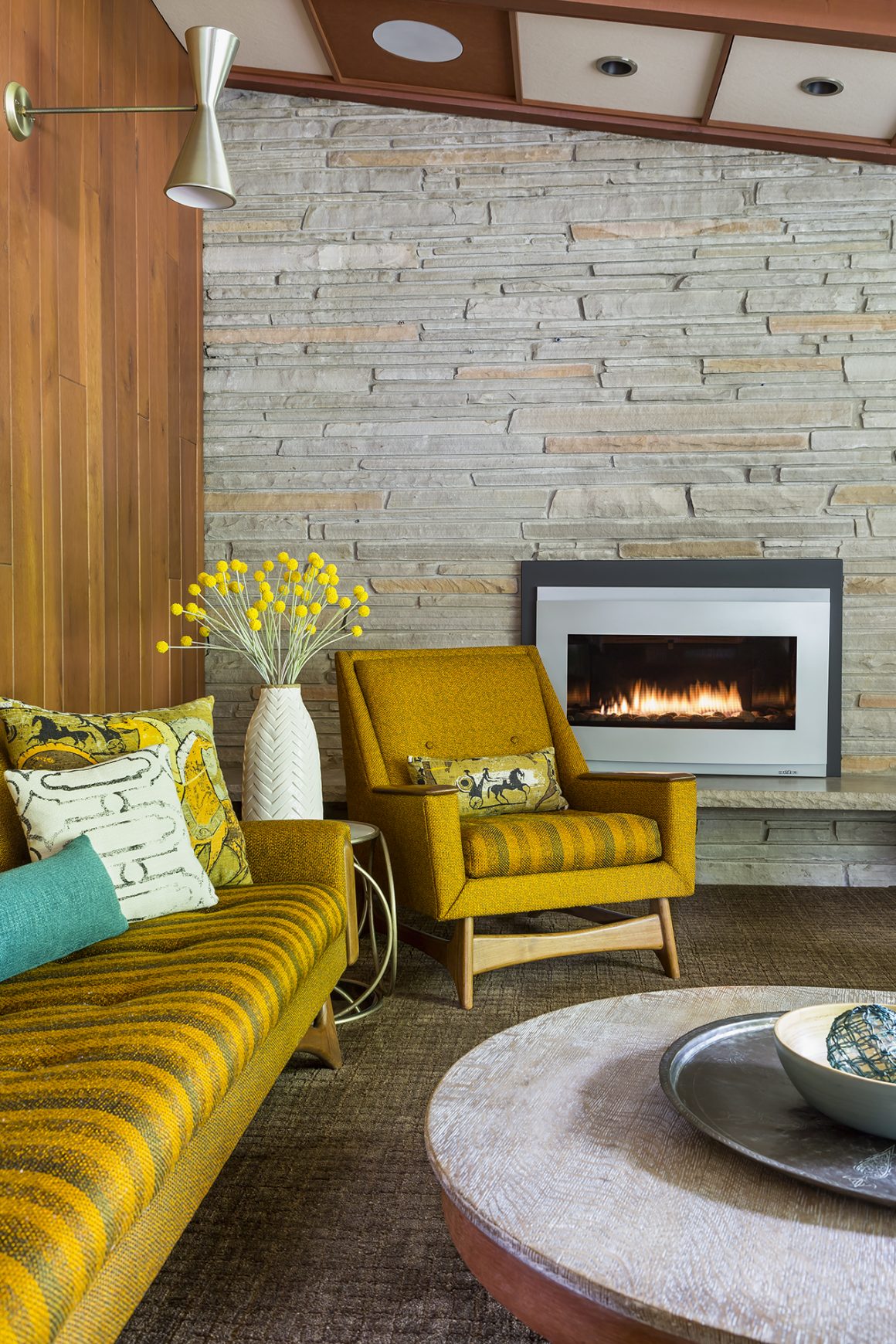 Andrea Rug
Andrea Rug -
6 of 6
Although they at first considered adding on to the home, the Brandts cherish the original design and are grateful that they didn’t rush to make changes. “I think that living in a house before you touch it is really important,” Kari says. They also realized they didn’t need as much space as they thought. Eric notes, “Don and his wife raised three daughters in this house and we’re raising two daughters, so we ought to be able to manage.”
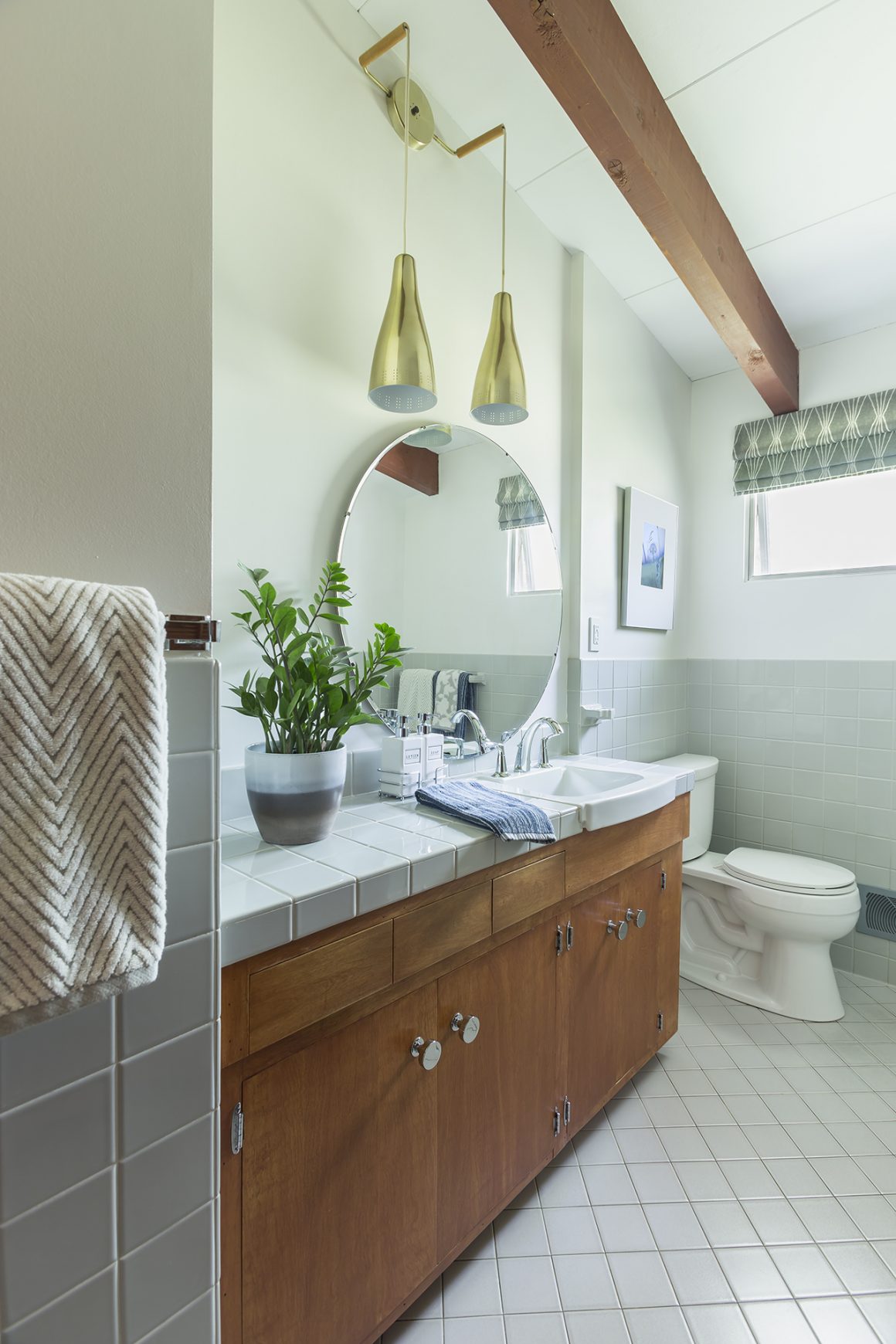 Andrea Rugg
Andrea Rugg
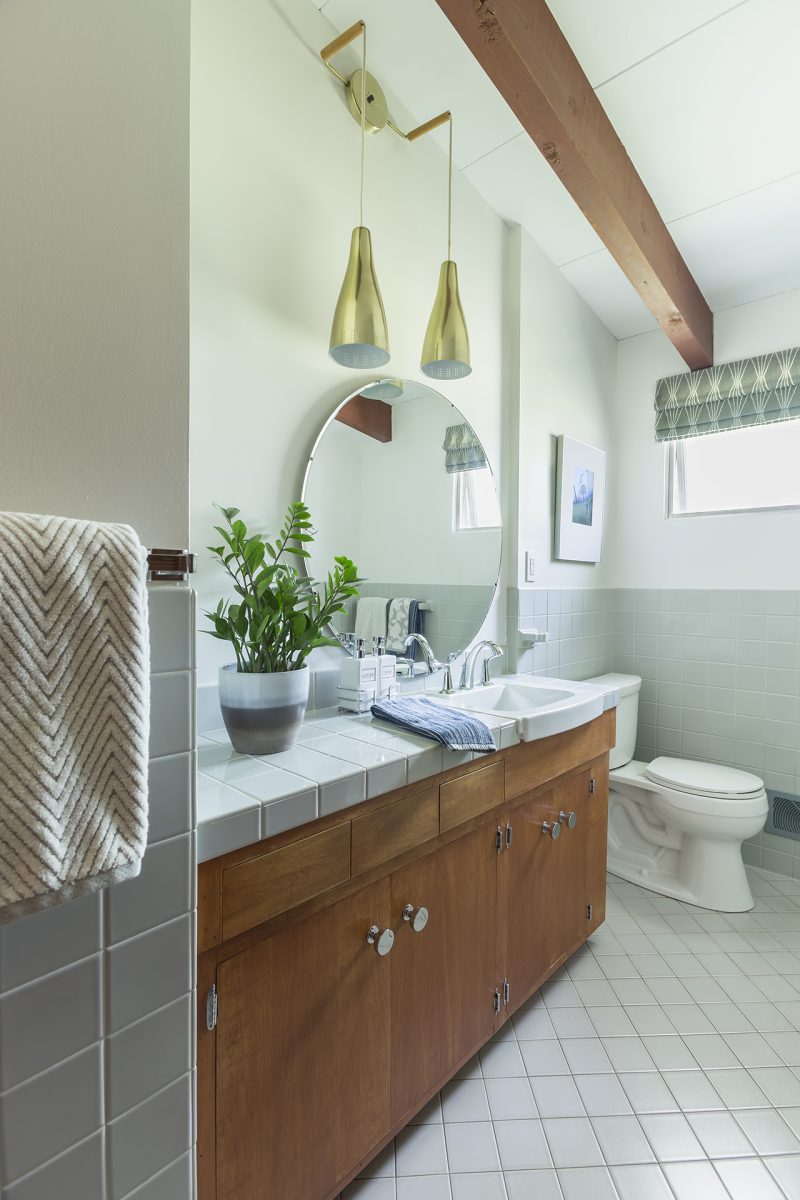
Tour A Midcentury Paradise in Minneapolis

An Insider’s Guide To Flea Market Bargain Hunting: Part 2
- July 27, 2018
- Written by Kris Christensen and Photography by Sarah Jane Stone
You May Also Like
Sarah Jane Stone
Sarah Jane Stone is a contributor to Atomic Ranch and its former editor. She has a deeply held passion for all things vintage, a weak spot for handmade pottery and loves wearing neutrals for their chic simplicity. She is endlessly restyling her coffee table and, along with her husband, is on a lifelong hunt for the next best cup of...

